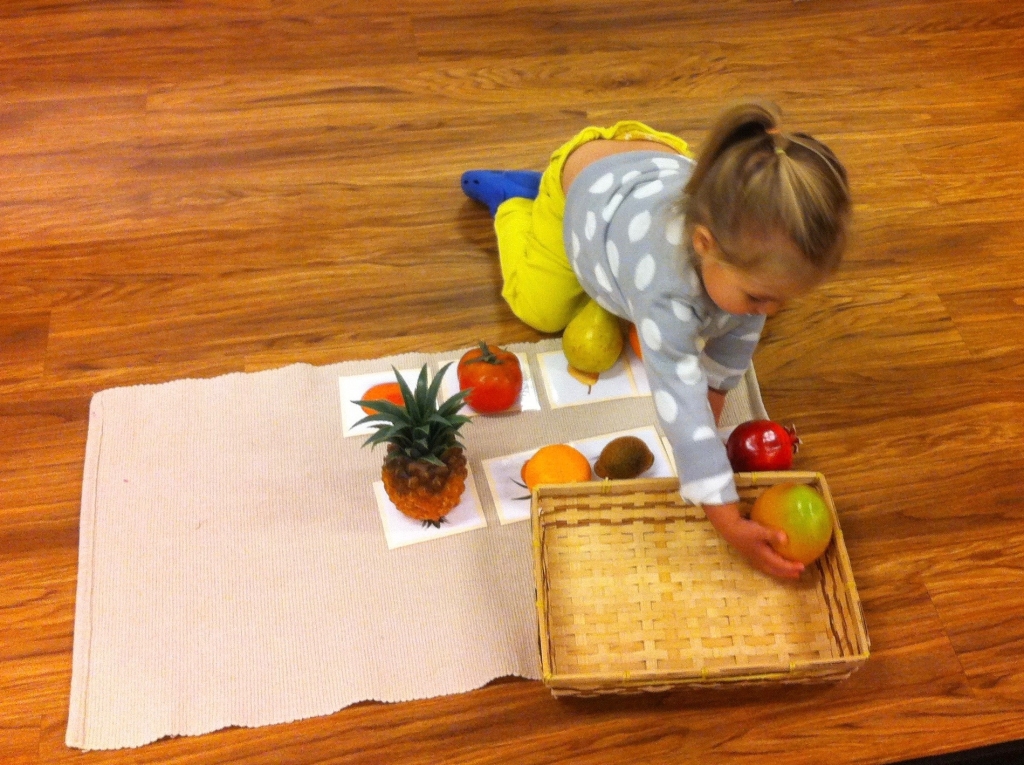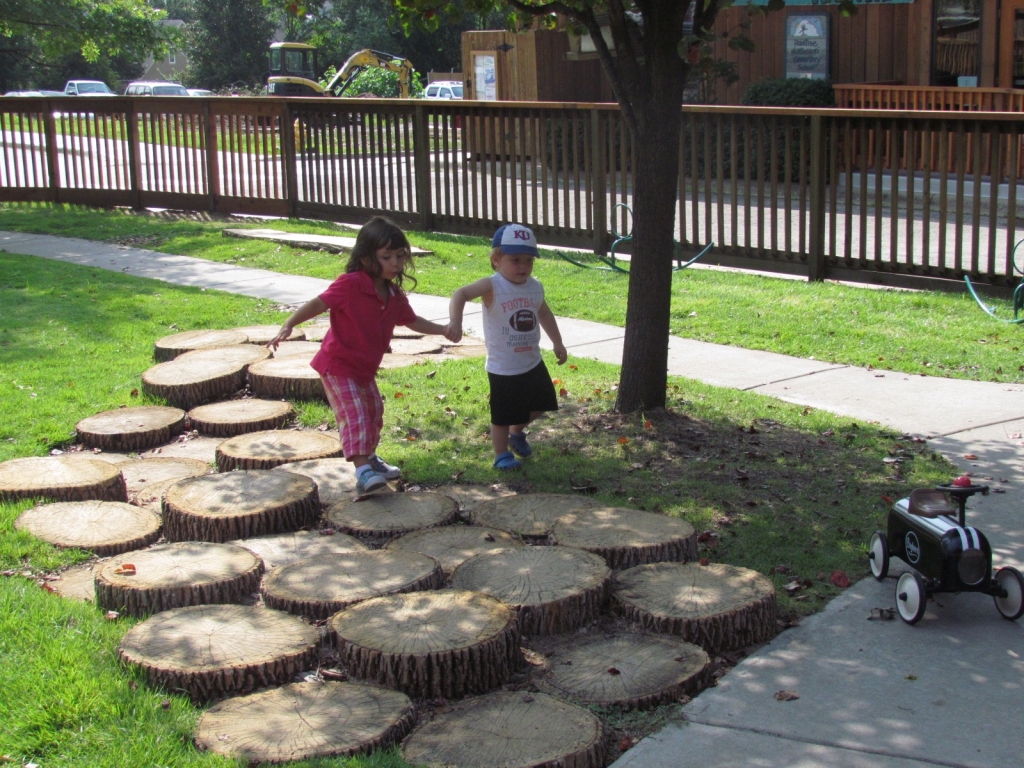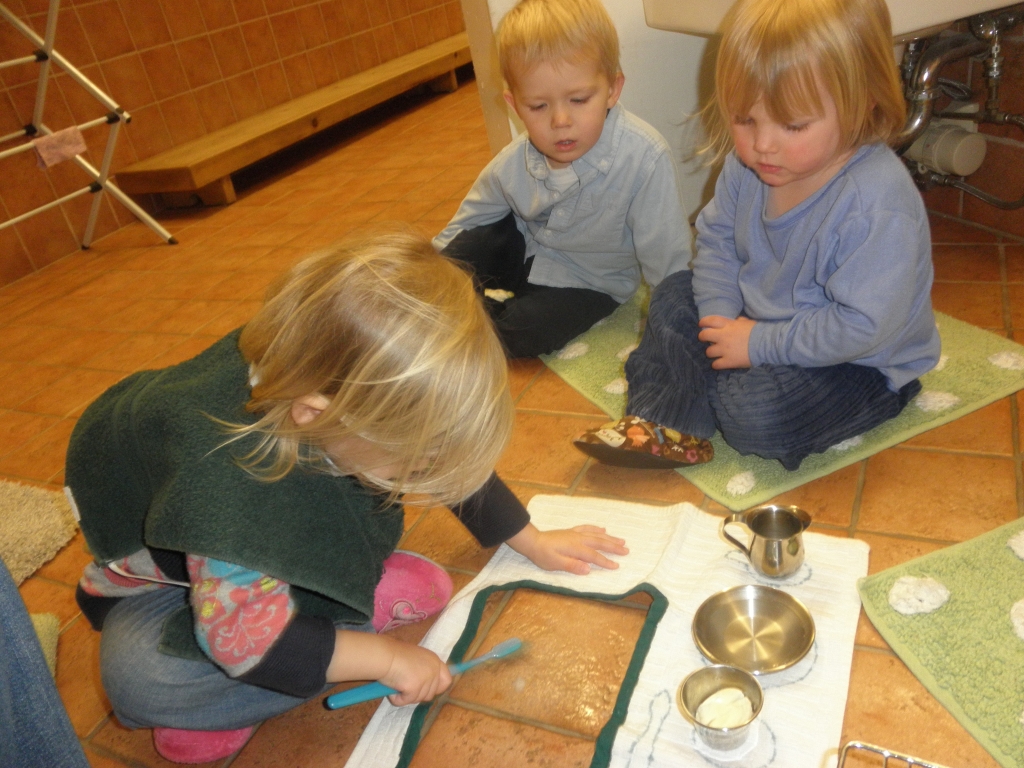A day in the life of a Raintree toddler
Children arrive between 7:30 and 8:30 either into their classroom or to the toddler play yard. We encourage parents to walk their child into Raintree and not carry him to the classroom door. By walking next to your child you are respecting his independence and developing will.
Your child has a special place at the coat rack where coats or jackets can be hung and a place for boots or outside shoes. Encourage your child to do as much for herself and give assistance as needed. Outside each toddler community is a stack of “Daily Reports.” Please fll out the top portion about your child’s morning. Tis note may also be used as a way to communicate information with the teacher.
Give a warm and brief goodbye to your child at the door of the classroom or at the gate to the play yard. Encourage your child to give a handshake to the teacher. If the children are inside, understand that this time is part of the children’s uninterrupted work cycle. Te teacher will be giving individual lessons or working with small groups of children. Tis is not a time to have a lengthy discussion at the classroom door with the teacher or assistant as that would be disruptive to the children’s concentration.
Depending on the toddler community’s daily schedule, outside time is either at the beginning of the morning or the end of the morning. If it is a beautiful day the children may spend a longer period outside, perhaps bringing materials from the classroom to the outside patio to work or taking a long walk in the “Back 40” or exploring the primary or elementary playground. Te outside world is such a new place for the young toddler that we joyfully welcome novel adventures!
During the morning work time children are responsible for setting up their own snack place: tray, small water pitcher, glass, plate or bowl and cloth napkin. Each item is carried by the child one at a time to the space she chooses. When the child has finished, she is either offered snack by the teacher or she may help herself at the snack “buffet.” When she is satisfied and ready to get back to work, she cleans her space by putting away each material.
At every transition in the day, the children take the opportunity to use the toilet and wash hands. Tis happens when coming in from the outdoor environment, before snack, before lunch, after lunch, after nap, and again in the afternoon. It becomes part of the natural schedule of the day and therefore just part of what we do. Children are asked to sit on the toilet and wash hands. Child cubbies, a hamper and a drying rack are accessible to the children so that when a spill happens or clothing gets wet or soiled, the child can take care of himself independently or with assistance.
Developmentally toddlers are in the sensitive period for order, movement and language. The classroom environments are prepared to support these developmental periods in the young child. Toddlers need external order in order to develop their internal order. They need a large enough space for free movement inside and out. They need purposeful activities that encourage movement. The Montessori environment is rich with language – spoken language through conversation, song, storytelling, and materials that enrich their vocabulary. The world around the toddler is so interesting and wonderful that their is no need for baby talk or fantasy. Children want the accurate names of the interesting things they see around them. 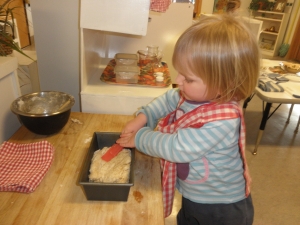
Toddlers are developing their will which is a wonderful thing! You may hear, “No! I do it myself.” This is their path to independence and we need to support this natural development. An environment that is child-centered means that it supports the developmental needs of the child. Te furniture is toddler-sized and all the materials are accessible to the children. Children have freedom in the environment in which to choose what they wish to do.
The children eat lunch family-style in community serving themselves and passing dishes around the table. They clear all of their dishes: plate, utensils, glass, cloth napkin when finished and head to the restroom. The children use the bathroom, wash hands and brush teeth before finding their cot. Te transition from lunch to nap time is a natural procession and is child-driven. As more children are resting on their cots, the blinds are slowly closed, lights turned off and soft music turned on. The teachers assist children with gentle back-patting if needed.
As children begin to wake, lamps are turned on and blinds are opened. Children use the bathroom and help put their cot away. Depending on the schedule for each community, children may choose work, snack or prepare to go outside (or swimming) until parents pick-up.
The Toddler Community is a beautiful, peaceful place where ten children spend their day guided by highly trained and experienced adults. The spacious room opens onto a patio and garden that leads to a large playground. The children work throughout the day in noble pursuits of self-construction. 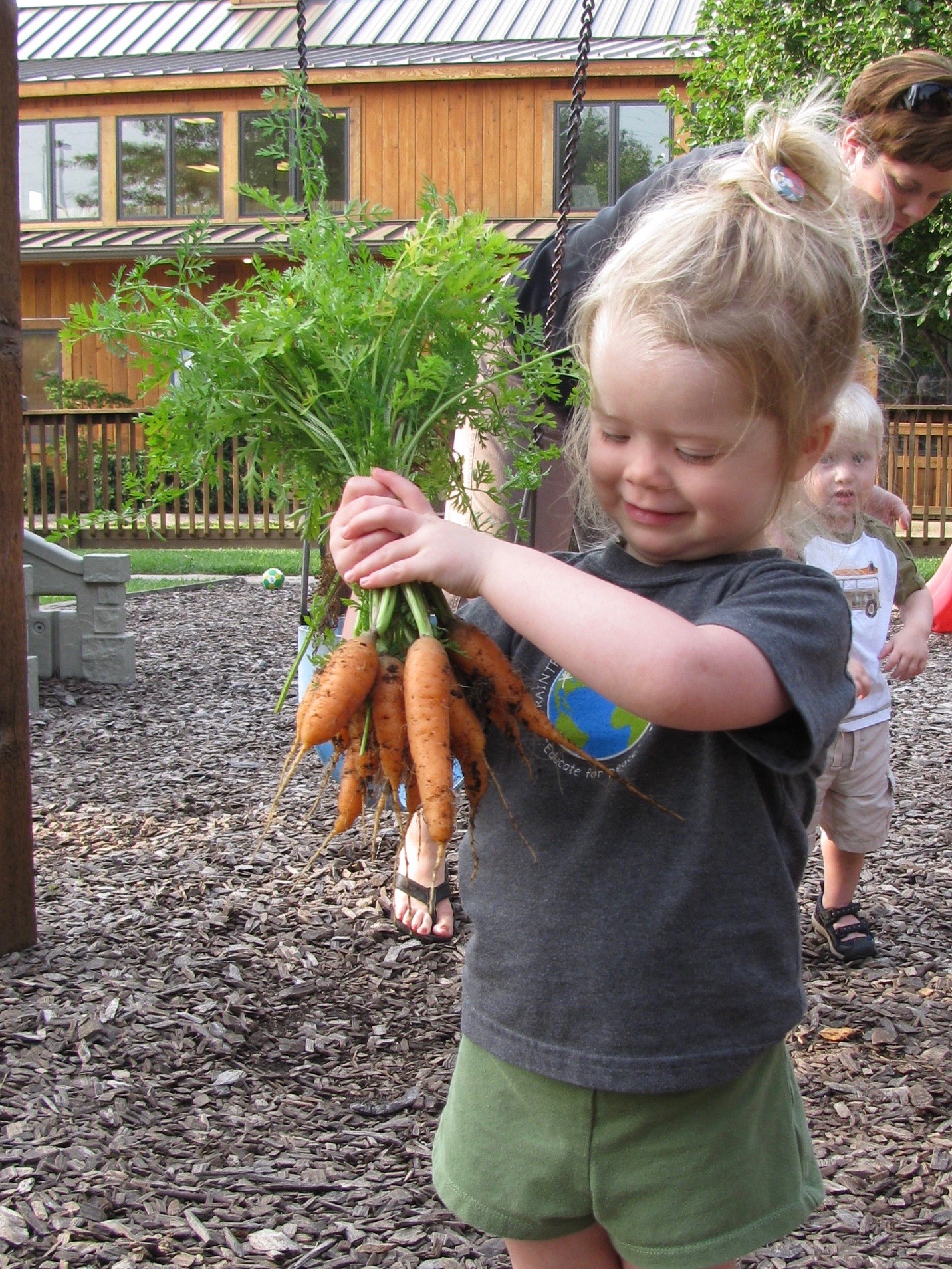 Inside the children can be found carefully cleaning the leaves of a plant with a tiny sponge, arranging flowers in small vases, kneading bread on a miniature bread board, or looking at a picture book curled up in a cozy corner.
Inside the children can be found carefully cleaning the leaves of a plant with a tiny sponge, arranging flowers in small vases, kneading bread on a miniature bread board, or looking at a picture book curled up in a cozy corner.
Outdoors children gather newly fallen apples from the apple tree to make applesauce for snack in addition to the many other activities provided for them outside. The children take excursions with the Guides beyond their immediate play space to the Back Forty, the fields at the back of the Raintree campus, where they can roll down the sledding hill, look for tadpoles in the tiny rivulet of water that cuts across the back of the property and look for goslings on Raintree Pond.
The focus of the Toddler Community is to provide the most loving and nurturing environment for young children outside of their home, to enrich their vocabulary, to assist in their efforts at independence such as dressing themselves and potty training and to give the children the most ideal setting in which they can construct themselves. From 0-3 years of age, the child’s mind is the most “absorbent” it will ever be. They take in everything indiscriminately. What they are absorbing—the words spoken to them, the physical beauty around them, even the food they eat—make lasting impressions. At Raintree, we are guided by Montessori’s research and inspired by her words when she said, “Give the very best to the very youngest,”


